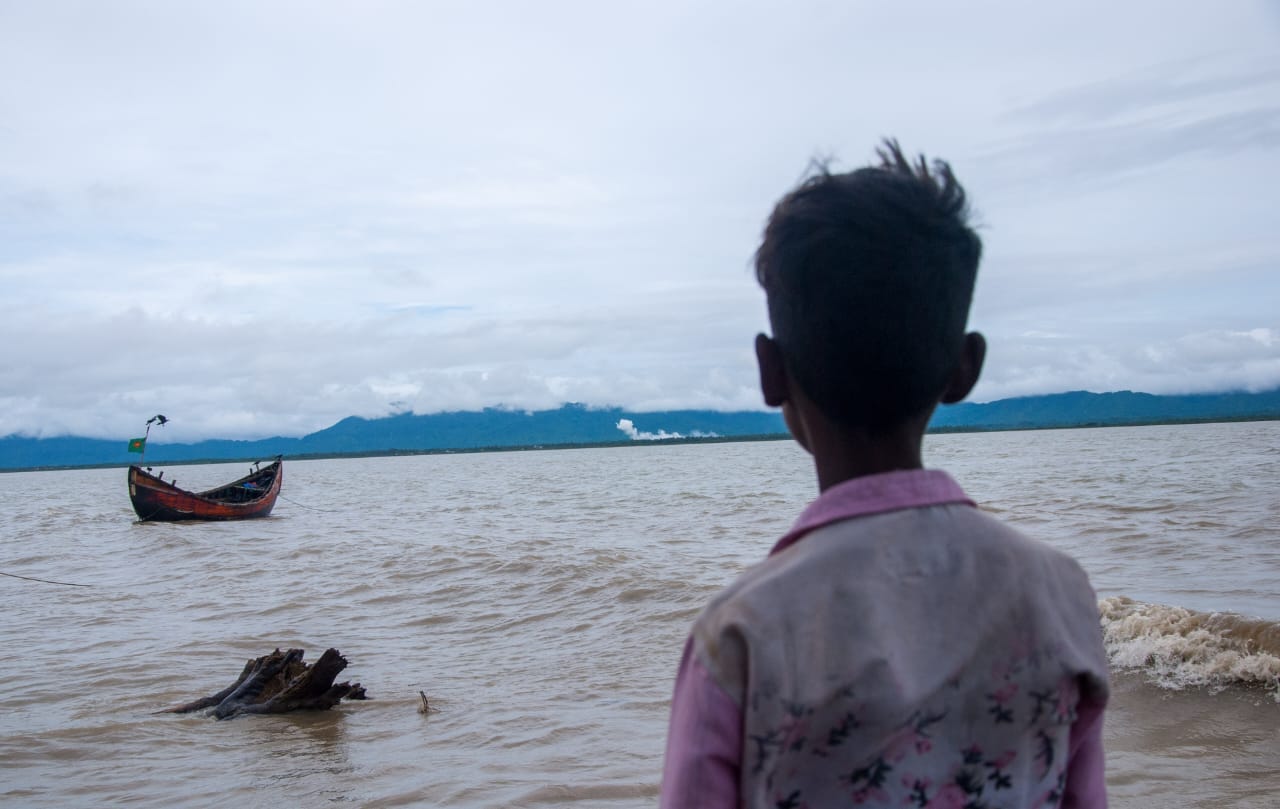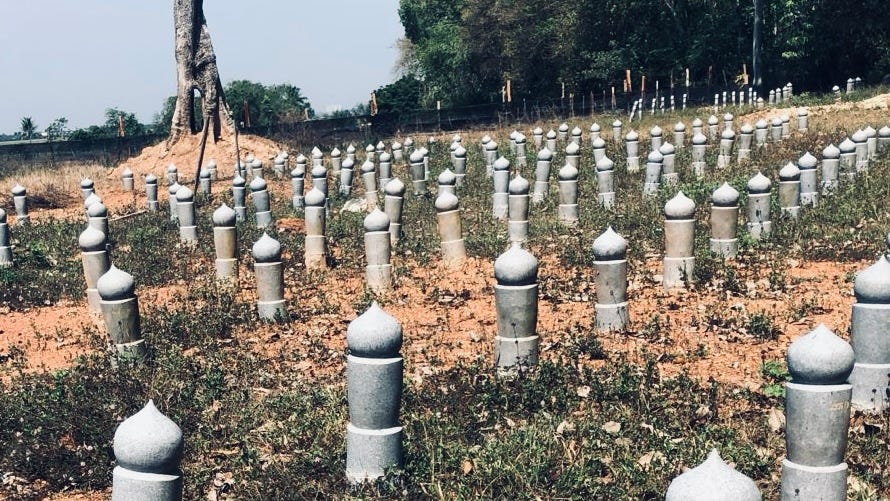Revisiting Malaysia’s “Respectable Deportations” of the Rohingya

Reading recent Malaysian coverage of the Langkawi boat tragedy, I keep finding myself pulled back to 2020, to the moment I first read the statement from the Centre for Human Rights Research and Advocacy (CENTHRA). At the time, CENTHRA’s lead figure, Mohammed Azril, was widely regarded as a friend of the Rohingya. Their statement sounded sympathetic, invoking the language of human rights, Islamic compassion, and Malaysia’s reputation for humanitarian generosity. But buried deep in the text was a single, unforgettable line. “Deportations,” it said, “if necessary, must be done in a respectable, humane manner.”
When I first read that line, I was in shock and didn’t know what to say. I actually tweeted a reply:
“What is a ‘respectable’ and ‘humane’ deportation as applied to vulnerable refugees? Is this a qualification of non-refoulement?
And why talk about deportation if you are asking Malaysia to ratify the refugee convention?”
That sentence gutted the rest of the statement. It was the rhetorical equivalent of saying torture is fine as long as it’s polite. For Rohingya, “deportation” doesn’t mean some bureaucratic, orderly return through an international airport. It means refoulement - return to a country that stripped them of citizenship, torched their homes, and killed their families. And just as often in this region, it means something even cruder. It meant being pushed back into the sea, left to drift in waters where people have starved, drowned, or simply disappeared.
There is no such thing as a humane return to persecution. There is no “respectable” way to tow a boat of starving families back out into open water.
What alarms me now, five years later, is that this logic hasn’t disappeared - it has matured and embedded itself more deeply. It has become the scaffolding behind a wide range of official statements, media commentary, and policy rhetoric in Malaysia. You see it everywhere. In press statements, televised interviews, ministerial speeches, op-eds, and social media talking points.
On the surface, the language can be gentle and humanitarian. Articles refer to “desperate families fleeing persecution” and “tragic loss of life at sea.” Officials speak of “humane treatment” and Malaysia’s proud history of hosting displaced people. The Rohingya are framed as victims. That is, until they arrive. Then, just as suddenly, they become a threat.
This dual register is sustained by a key rhetorical manoeuvre - the split between rescue and refuge. Media commentary repeatedly stresses that Malaysia has no legal obligation to accept refugees, citing its non-ratification of the 1951 Refugee Convention. At the same time, it praises Malaysia for rescuing people in distress at sea, suggesting that rescue is a moral good, but protection is someone else’s problem. This is how states get to fulfil the bare minimum of international law, rescuing people on the water while avoiding its actual purpose. That is, to protect those fleeing persecution.
In practice, this rhetorical split provides cover for policies that violate core legal principles. Once a person expresses fear of persecution, the principle of non-refoulement is triggered. That’s not some kind of legal nicety - it’s a binding obligation under customary international law. It applies in territorial waters, in maritime zones, and even on the high seas. And yet Malaysia continues to push boats away, delay landings, and deny disembarkation. These actions are routinely described in euphemistic terms. So you will read phrases like “managing arrivals,” “controlling influx,” “preserving public order.” Rarely, if ever, are they called what they are - pushbacks.
The real policy has always been deterrence. Malaysian officials frame tough measures as unfortunate necessities for national security. Detention is rationalised as protection of public health. Refusal to allow landings is blamed on lack of capacity. Media commentary echoes this logic. The result is a discourse that sounds responsible but enforces abandonment.

And the omissions are glaring. You rarely find serious discussion of what actually happens when boats are turned back. There is no mention of the Rohingya who died after Malaysian authorities refused them entry, no mention of the overcrowded detention centres where disease and abuse are widespread, no mention of the refugees sentenced to whipping under Malaysia’s immigration law. And certainly no mention of Wang Kelian — the mass graves uncovered on the Malaysia–Thailand border in 2015, where Rohingya refugees and other migrants were trafficked, tortured, and left to die while Malaysian enforcement officers were alleged to have colluded with syndicates. The case was never properly resolved, the findings were buried, and key actors were never held accountable. Its silence now is deliberate because acknowledging Wang Kelian would shatter the story that Malaysia’s enforcement system is merely “overstretched” or “doing its best.”
Going back to the matter of whipping refugees, Human Rights Watch documented one such episode in exacting detail. More than forty Rohingya refugees who reached Malaysian waters were jailed for “illegal entry.” Many of the men were sentenced to three strokes of the cane - a punishment that meets the UN definition of torture. Children from the same boat were separated from their families and sent to “shelters,” where they too faced the threat of prosecution. This is what Malaysia does to survivors of genocide. And this is what sits behind the soft-focus language of “humanitarian concern.”
Even diaspora Rohingya spokespersons often hesitate to name the full picture. Whether through political proximity or strategic silence, many avoid discussing Bangladesh’s role in making the camps unliveable - the restrictions on movement, the armed violence, the denial of education, and the systematic effort to eliminate the future. Bangladesh’s own pushbacks into the Bay of Bengal are erased. The conversation begins and ends with Myanmar, as if the last eight years never happened.
Meanwhile, Malaysia positions itself as overburdened and underappreciated. Media narratives repeatedly frame the crisis as a global problem unfairly dumped on Malaysia’s doorstep. They call for “international solutions” and “third-country resettlement,” International burden-sharing is crucial, but it cannot justify criminalising refugees or treating asylum as a geopolitical hot potato.
And then there’s the home ministry’s “public security” paper I came across - a text hosted on the government’s website - which goes further than most media in spelling out the state’s view. In that paper, Rohingya associations, schools, and WhatsApp groups are described not as signs of community resilience but as red flags for radicalisation. The act of speaking up is recoded as a potential threat. The Rohingya are portrayed as a population with a militant past and a destabilising future. Even Islamic solidarity is treated with suspicion - a possible precursor to veiled mobilisation.
The conclusion is unmistakable. Rohingya must be monitored, contained, and controlled. If left unregulated, the paper warns, they may one day use Malaysia as a base for organised resistance or religious militancy. The message is clear. If they have to be welcomed as victims, then manage them as threats.
What becomes clearer with every new editorial and official statement is that Malaysia’s approach is not exceptional. It is part of a regional strategy in Southeast Asia that has solidified over the last decade - a strategy built not on humanitarian norms but on a quiet, mutually reinforcing consensus.
Across the region, governments have converged on a simple doctrine.
Keep the Rohingya unrecognised, unanchored, and circulatable - but never settleable. They are allowed to escape, but not to belong. They are allowed to arrive, but not to stay. They can be rescued, but not admitted. They can be tolerated temporarily, but never integrated.
Pushbacks are the purest expression of this logic. When Malaysia escorts a boat back into deeper waters, or when Thailand refuses disembarkation, or when Bangladesh pushes refugees out into the Bay of Bengal, the effect is the same. The Rohingya are preserved as a floating surplus population - unwanted, unrooted, but somehow still useful.
They are useful as a moral bargaining chip. Also as a security justification.
And of course, as a population that can be invoked when needed and discarded when inconvenient. This is the region’s informal coordination mechanism - not refugee law but a system of shared non-recognition and deterrence.
No one wants the political burden of asylum or the responsibility of rights. But everyone is willing to maintain the machinery that keeps the Rohingya in permanent circulation. And pushed from one jurisdiction to another, recognised by none, and protected by no one. The language differs from country to country, but the architecture is identical. You get humanitarian words, deterrent policies, and the constant insistence that the real solution lies elsewhere.
And so I return again to CENTHRA’s phrase from 2020. “Respectable, humane deportations.” It’s astonishing how much of the current policy discourse still follows that logic. Acknowledge suffering but erase rights. Invoke compassion but practise deterrence and punish harshly. That is the language of respectable refoulement. And I say it again, it’s everywhere now. Malaysia’s human-rights self-image is written in the language of generosity. Its actual refugee policy is written in the language of removal.
